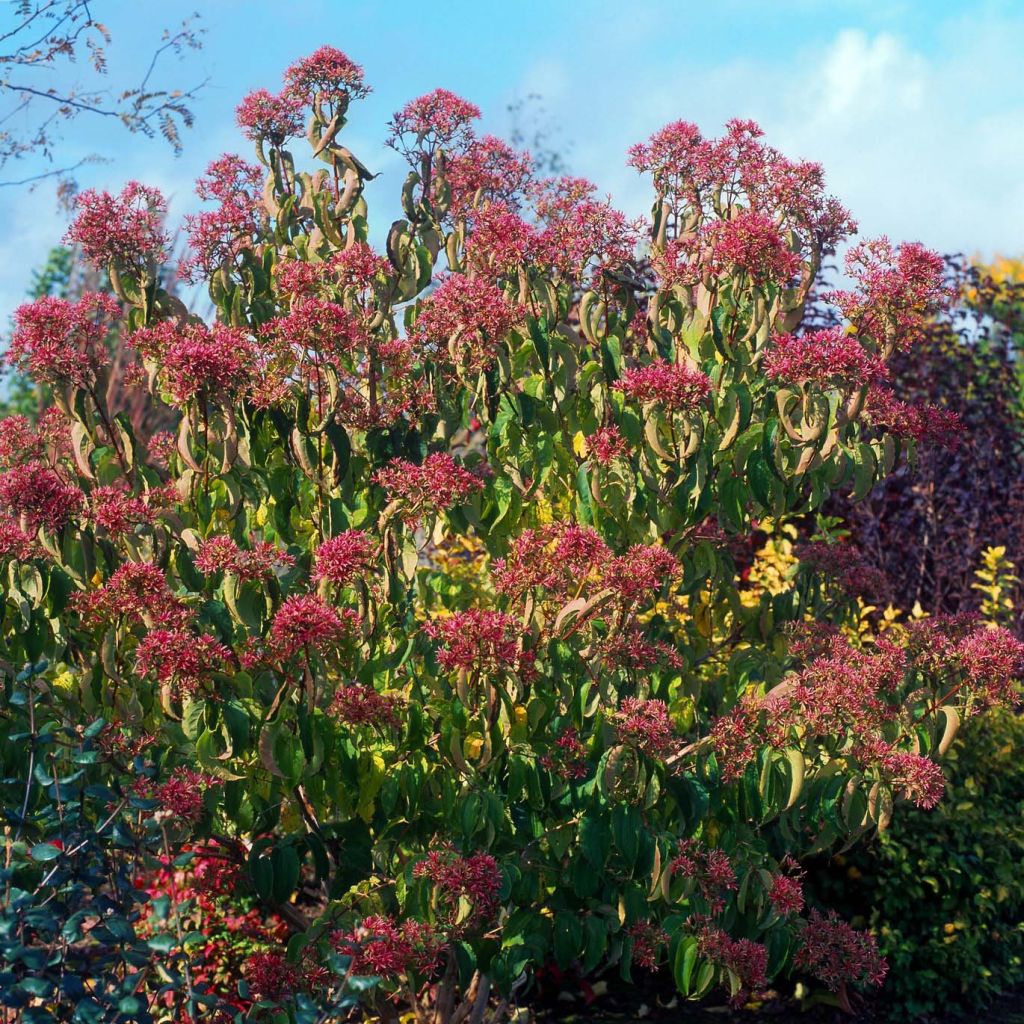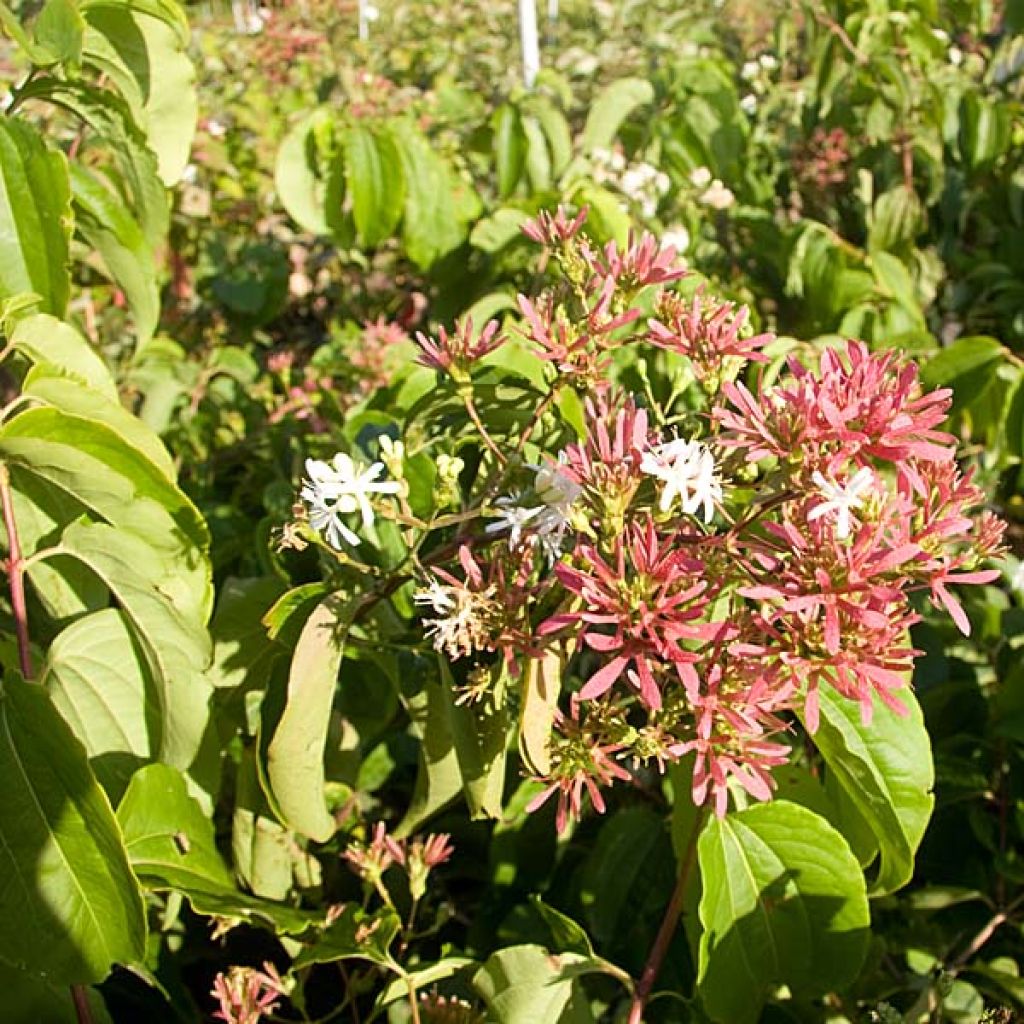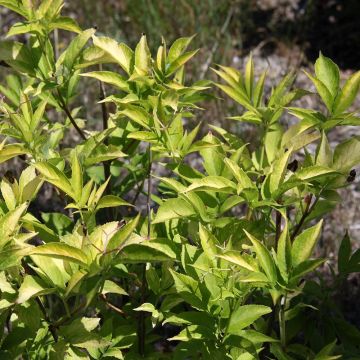

Heptacodium miconioides - Seven-son Tree


Heptacodium miconioides - Seven-son Tree


Heptacodium miconioides - Seven-son Tree


Heptacodium miconioides - Seven-son Tree


Heptacodium miconioides - Seven-son Tree


Heptacodium miconioides - Seven-son Tree


Heptacodium miconioides - Seven-son Tree


Heptacodium miconioides - Seven-son Tree


Heptacodium miconioides - Seven-son Tree


Heptacodium miconioides - Seven-son Tree


Heptacodium miconioides - Seven-son Tree
Heptacodium miconioides - Seven-son Tree
Heptacodium miconioides
Seven-son Tree, Autumn lilac
The bush arrived in October all in flower in very good condition, it is now well established in the garden, hopefully it will thrive.
Françoise , 16/10/2024
Special offer!
Receive a €20 voucher for any order over €90 (excluding delivery costs, credit notes, and plastic-free options)!
1- Add your favorite plants to your cart.
2- Once you have reached €90, confirm your order (you can even choose the delivery date!).
3- As soon as your order is shipped, you will receive an email containing your voucher code, valid for 3 months (90 days).
Your voucher is unique and can only be used once, for any order with a minimum value of €20, excluding delivery costs.
Can be combined with other current offers, non-divisible and non-refundable.
Home or relay delivery (depending on size and destination)
Schedule delivery date,
and select date in basket
This plant carries a 24 months recovery warranty
More information
We guarantee the quality of our plants for a full growing cycle, and will replace at our expense any plant that fails to recover under normal climatic and planting conditions.


Would this plant suit my garden?
Set up your Plantfit profile →
Description
Heptacodium miconioides, sometimes called Heptacodium jasminoides, or more poetically "flowers of the seven sons of Zhejiang," is a large deciduous shrub from China that is unfairly overlooked, arriving in France just over 20 years ago, yet interesting for more than one reason. Without being a spectacular plant, this species, related to honeysuckles and Abelias, is robust and undemanding, easy to acclimate in most of our gardens. Its diverging and open habit is elegant and full of character, and its flowering, which changes from white to red, remains decorative until the frosts. Its foliage, deciduous, turns red in autumn and falls very late in the season. Finally, its last asset, and not the least, is its beautiful beige-pink bark, which exfoliates and takes on a marbled appearance in winter. It is not demanding in terms of soil type, extremely hardy, and grows very quickly. So many reasons to discover this uncommon species that fights monotony in the garden!
Heptacodium miconioides is a small deciduous tree from the Caprifoliaceae family, reaching 4 to 5m (16in 5ft) in all directions in our climates, but sometimes reaching 7 to 8m in its country of origin. It is native to a very restricted area located east of China, where it has apparently become rare. It most often grows with multiple "trunks" and has a bushy, spreading, and diverging habit. Its branches are adorned with leaves arranged in pairs, 7 to 12cm long, round with acute tips, slightly undulate, and dark green with a glossy finish. They take on a subtle yellow to purple hue before falling, usually at the end of November. The flowers appear in late August, clustered in panicles at the ends of the branches. They are star-shaped, with 5 sepals at the tip of a tubular corolla, and emit a very pleasant fragrance reminiscent of jasmine. The flowering, which is both honey-producing and nectar-producing, reaches its peak in September, with the white flowers gradually revealing calyxes tinted with cherry pink, which are as decorative as the flowers and persist until the frosts. The bark, smooth, is a beautiful light brown to beige-pink colour and exfoliates in salmon-brown flakes. To better admire it on a single trunk, it is preferable to gradually eliminate certain branches that emerge towards the bottom of a main stem.
One of our favourites, as you may have guessed. For a little history, it was imported from China in the early 20th century; forgotten, it was rediscovered in the 1980s in a Belgian garden; dedicated to Courson in the 1990s, it remains quite rare. It can be planted in a grove, a hedge, or even as a standalone plant in a small garden or in the middle of a dedicated bed, accompanied by easy-to-grow Asian plants (Corydalis, Aconogonon, Osmanthus...). It will pair well with Abelias, shrub honeysuckles, lilacs, and various viburnums... Asters and perennial chrysanthemums will also accompany it at the end of the season. A carpet of hellebores, evergreen ferns (Nephrolepis exaltata), cyclamens, and Epimediums will serve as a backdrop to its unique bark. A bushy clematis (Clematis heracleifolia, tangutica, or viticella) will climb and flower between its branches in summer.
Report an error about the product description
Heptacodium miconioides - Seven-son Tree in pictures






Plant habit
Flowering
Foliage
Botanical data
Heptacodium
miconioides
Caprifoliaceae
Seven-son Tree, Autumn lilac
China
Other Heptacodium
View all →Planting and care
Heptacodium is tolerant and accepts any soil, even relatively dry and chalky, in sunny or semi-shade exposure. Its growth will be slightly more significant in the sun. However, it prefers moist, non-chalky soils, where its growth will be faster. It tolerates sea spray and urban pollution. Water abundantly at planting, and during the summer in case of prolonged drought. Pruning is not necessary. However, to form a single trunk to better appreciate the beauty of the bark, it will be necessary to choose the most beautiful stem and remove some branches that may develop at the base over time..
Planting period
Intended location
Care
-
, onOrder confirmed
Reply from on Promesse de fleurs
Similar products
Haven't found what you were looking for?
Hardiness is the lowest winter temperature a plant can endure without suffering serious damage or even dying. However, hardiness is affected by location (a sheltered area, such as a patio), protection (winter cover) and soil type (hardiness is improved by well-drained soil).

Photo Sharing Terms & Conditions
In order to encourage gardeners to interact and share their experiences, Promesse de fleurs offers various media enabling content to be uploaded onto its Site - in particular via the ‘Photo sharing’ module.
The User agrees to refrain from:
- Posting any content that is illegal, prejudicial, insulting, racist, inciteful to hatred, revisionist, contrary to public decency, that infringes on privacy or on the privacy rights of third parties, in particular the publicity rights of persons and goods, intellectual property rights, or the right to privacy.
- Submitting content on behalf of a third party;
- Impersonate the identity of a third party and/or publish any personal information about a third party;
In general, the User undertakes to refrain from any unethical behaviour.
All Content (in particular text, comments, files, images, photos, videos, creative works, etc.), which may be subject to property or intellectual property rights, image or other private rights, shall remain the property of the User, subject to the limited rights granted by the terms of the licence granted by Promesse de fleurs as stated below. Users are at liberty to publish or not to publish such Content on the Site, notably via the ‘Photo Sharing’ facility, and accept that this Content shall be made public and freely accessible, notably on the Internet.
Users further acknowledge, undertake to have ,and guarantee that they hold all necessary rights and permissions to publish such material on the Site, in particular with regard to the legislation in force pertaining to any privacy, property, intellectual property, image, or contractual rights, or rights of any other nature. By publishing such Content on the Site, Users acknowledge accepting full liability as publishers of the Content within the meaning of the law, and grant Promesse de fleurs, free of charge, an inclusive, worldwide licence for the said Content for the entire duration of its publication, including all reproduction, representation, up/downloading, displaying, performing, transmission, and storage rights.
Users also grant permission for their name to be linked to the Content and accept that this link may not always be made available.
By engaging in posting material, Users consent to their Content becoming automatically accessible on the Internet, in particular on other sites and/or blogs and/or web pages of the Promesse de fleurs site, including in particular social pages and the Promesse de fleurs catalogue.
Users may secure the removal of entrusted content free of charge by issuing a simple request via our contact form.
The flowering period indicated on our website applies to countries and regions located in USDA zone 8 (France, the United Kingdom, Ireland, the Netherlands, etc.)
It will vary according to where you live:
- In zones 9 to 10 (Italy, Spain, Greece, etc.), flowering will occur about 2 to 4 weeks earlier.
- In zones 6 to 7 (Germany, Poland, Slovenia, and lower mountainous regions), flowering will be delayed by 2 to 3 weeks.
- In zone 5 (Central Europe, Scandinavia), blooming will be delayed by 3 to 5 weeks.
In temperate climates, pruning of spring-flowering shrubs (forsythia, spireas, etc.) should be done just after flowering.
Pruning of summer-flowering shrubs (Indian Lilac, Perovskia, etc.) can be done in winter or spring.
In cold regions as well as with frost-sensitive plants, avoid pruning too early when severe frosts may still occur.
The planting period indicated on our website applies to countries and regions located in USDA zone 8 (France, United Kingdom, Ireland, Netherlands).
It will vary according to where you live:
- In Mediterranean zones (Marseille, Madrid, Milan, etc.), autumn and winter are the best planting periods.
- In continental zones (Strasbourg, Munich, Vienna, etc.), delay planting by 2 to 3 weeks in spring and bring it forward by 2 to 4 weeks in autumn.
- In mountainous regions (the Alps, Pyrenees, Carpathians, etc.), it is best to plant in late spring (May-June) or late summer (August-September).
The harvesting period indicated on our website applies to countries and regions in USDA zone 8 (France, England, Ireland, the Netherlands).
In colder areas (Scandinavia, Poland, Austria...) fruit and vegetable harvests are likely to be delayed by 3-4 weeks.
In warmer areas (Italy, Spain, Greece, etc.), harvesting will probably take place earlier, depending on weather conditions.
The sowing periods indicated on our website apply to countries and regions within USDA Zone 8 (France, UK, Ireland, Netherlands).
In colder areas (Scandinavia, Poland, Austria...), delay any outdoor sowing by 3-4 weeks, or sow under glass.
In warmer climes (Italy, Spain, Greece, etc.), bring outdoor sowing forward by a few weeks.









































